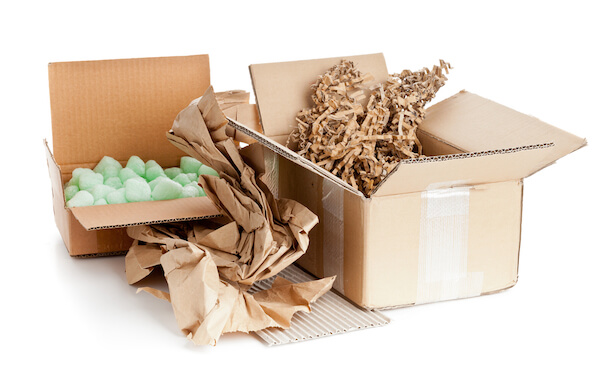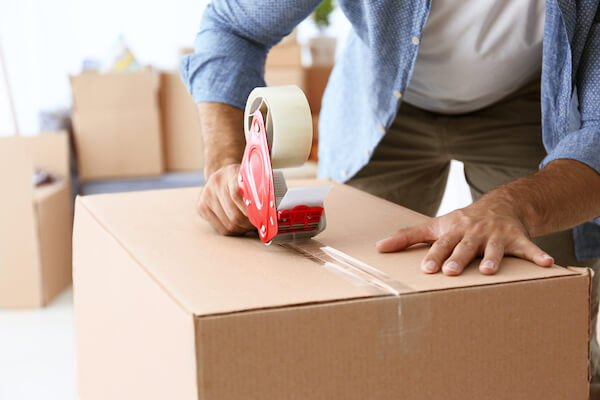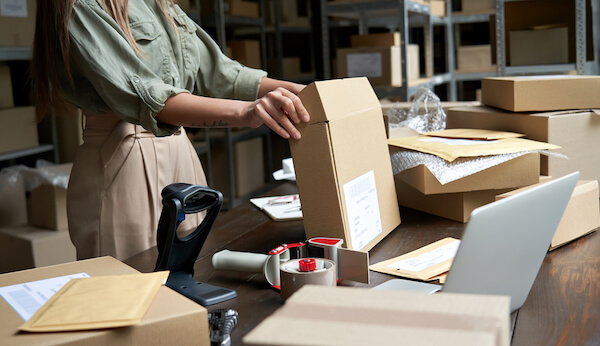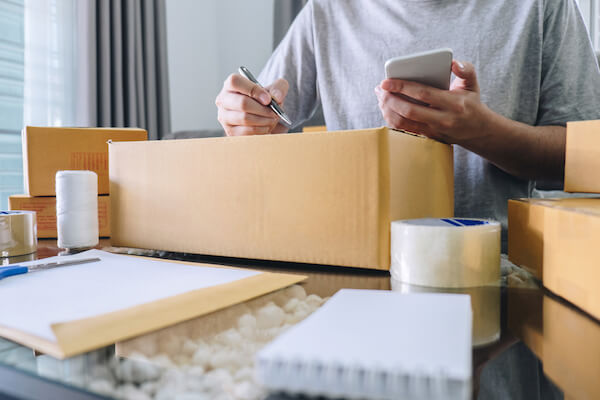By Sam Smith
September 27th 2021
Put your item in a box and send it. Surely that’s all you need to know about how to send a package, right? Well, yes and no.
There’s a whole world of packaging out there. From cardboard boxes to packing peanuts, mail bags and labels, there are many different options to consider when it comes to getting your package from A to B. As a leading supplier of all things packaging, here at Smith Packaging we consider ourselves to be connoisseurs when it comes to getting your item packed and shipped in the safest (and most sustainable) way.
Take a look at our top five tips on how to ship a package without the stress.
Choose your Materials
The first consideration is how you should package a parcel to send. Having the right materials is essential for ensuring your parcel gets there safe and sound. You want to match your package to the right kind of packaging supplies. For example, paperwork and documents are best sent in board backed envelopes, smaller parcels can be tucked up neatly into postal boxes, and fragile and heavy items may need to be packed into heavy duty cardboard boxes with all the bells and whistles.
Add Extra Protection
Now you’ve picked your packaging, you also want to consider what extra protection is needed. For those who want to know how to ship a package overseas in the safest way or for those sending fragile items, extra protection is your best friend. For heavier packages, you may want to consider swapping out single walled cardboard boxes for double walled so there is some extra padding when it comes to knocks and bumps. You can also wrap your precious goods in bubble wrap for extra protection. The same goes for tape – when your parcel is packaged, don’t rely on flimsy sellotape to keep your box shut. Proper packaging tape will make all the difference when it comes to ensuring your parcel is safely sealed.
Explore our packing tape range


Cut Out Empty Spaces
When working out how to send a package with the least amount of risk, the answer is more packaging. Make sure you fill in the gaps between your outer packaging (i.e. the cardboard box) and your item. The last thing you want is your item rattling around inside the box with no cushioning, as this could lead to breakages and damage should your parcel get dropped. This is especially important when shipping a package abroad. There are some great options for filling the void space within your parcel. You can choose packing peanuts for a low-cost lightweight option, or you could also use paper void fill if you wanted a more eco-friendly packaging solution.
Take a look at our void fill solutions


Be Super Clear with Labels
The label is one of the most important parts in how your parcel makes it from A to B, so make sure you are extra clear and careful when it comes to labeling your package. If you have access to a printer, you may be best printing your label (you can buy label sheets that are compatible with most printers), so you avoid any issues with handwriting being misread. Make sure that you place the label in a central, easily-seen location on the package and that no tape is covering the label. Also, add another label inside the box just in case the original label falls off. We also recommend adding a return delivery address label too (clearly marked) in case your package needs to be sent back.


Leave Enough Time
Depending on where you are shipping your package, you’ll want to make sure you’ve left plenty of time for it to get there (including extra time for any delays). Sending a package within the UK can take 1-2 days, depending on whether you’ve opted for a private courier or Royal Mail next day delivery. Costs will vary depending on the size of your package. International parcels can take 5-6 days and sometimes longer depending on which international delivery options you choose. You can help avoid delays by ensuring customs forms are completed correctly and you have checked the restricted items list.
